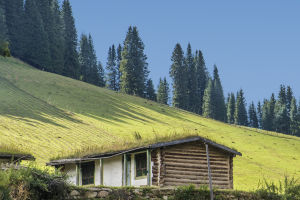Aerial photography offers a unique perspective that can provide breathtaking views of landscapes, cityscapes, and other natural and man-made features.
With the increasing popularity of drones and other aerial devices, aerial photography is becoming more accessible and easier to do. In this article, we will discuss some tips on how to choose settings depending on weather conditions and positioning tips and suggest some accessories that can help you capture amazing aerial photos.
Weather Conditions
Weather conditions can have a significant impact on the quality of your aerial photos. Before you start your aerial photography session, it is essential to check the weather conditions in your area. Here are some tips to help you choose settings depending on the weather:
1. Clear and Sunny: If the weather is clear and sunny, you can use a low ISO setting, a fast shutter speed, and a small aperture to capture sharp and detailed photos. Use a polarizing filter to reduce glare and reflections and enhance color saturation.
2. Cloudy or Overcast: If the weather is cloudy or overcast, use a higher ISO setting, a slower shutter speed, and a larger aperture to allow more light to enter the camera. This will help you capture a more vibrant and dynamic image. Use a neutral density filter to reduce the amount of light entering the lens and avoid overexposure.
3. Rainy or Foggy: If the weather is rainy or foggy, use a slow shutter speed and a large aperture to capture a moody and atmospheric image. Use a lens hood to protect your camera from water droplets and mist.
Positioning Tips
Positioning is a critical factor in aerial photography. The position of your camera relative to your subject can make a huge difference in the quality of your aerial photos. Here are some positioning tips to help you capture amazing aerial photos:
1. Plan your shot: Before you take off, plan your shot and determine the best position for your camera. This will help you get the perfect angle and composition for your shot.
2. Fly low: Flying low can help you capture more detailed and intimate shots of your subject. However, make sure you stay within the legal limits and follow safety guidelines when flying your drone.
3. Fly high: Flying high can give you a broader perspective and capture the full extent of your subject. This is particularly useful for landscape and cityscape photography.
4. Experiment with angles: Experiment with different angles and perspectives to create unique and visually striking images. Tilt your camera up or down, rotate it, or fly around your subject to capture a variety of shots.
Accessories
There are several accessories that can help you capture amazing aerial photos. Here are some accessories to consider:
1. Filters: Filters are essential for controlling the amount of light entering your lens and enhancing the color saturation of your photos. Polarizing filters reduce glare and reflections, while neutral density filters reduce the amount of light entering the lens.
2. Tripod: A tripod can help you capture stable and sharp images, particularly when shooting in low light conditions or when flying in windy conditions.
3. Remote Shutter Release: A remote shutter release can help you capture photos without touching your camera, reducing the risk of camera shake and resulting in sharper images.
To sum up, aerial photography offers an exciting and creative way to capture stunning images from a unique perspective. By taking into account weather conditions, positioning tips, and using the right accessories, you can produce amazing aerial photos that will leave a lasting impression on your viewers.
It is important to always prioritize safety and abide by legal regulations when using drones or other aerial devices.


